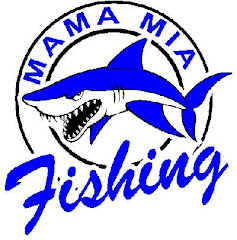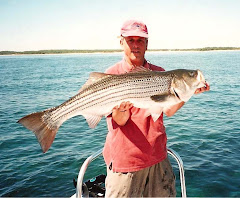Whether one is a novice or seasoned angler much thought typically goes into the selection of a new fishing rod, especially if it is a fly rod. While the experienced fly fisher will most likely be adding a specialty rod to an already established arsenal of gear, the newcomer is often seeking an all-round fly rod to handle diverse angling situations and conditions encountered around Long Island. Fly rods fall into the equipment category of “no one size fits all”. But for the inshore saltwater angler the selection process is made a bit easier since there are in fact a few rod styles and designs that best meet the needs of anglers who desire to toss flies to striped bass, bluefish, weakfish, false albacore and bonito. There are some pundits out there who still shroud the process of fly rod selection in opaque mystique, but buying your first saltwater fly rod need not be an anxiety filled event.
There are fundamentally two types of new entrants into the world of saltwater fly-fishing, those who have converted from freshwater and those whose initiation into the sport is through a baptism by saltwater. If you fall in to the former category you would be well served to leave many of your freshwater experiences and habits behind, especially as they pertain to casting a fly rod. In saltwater, the entire casting process slows down and the dynamics of loading a rod take on more significance.
When selecting a rod, the most important consideration is to actually cast a few models so that you have a feel for what all the labeling lingo really means. And cast the rod with some form of fly resistance at the end of the line. I always get a kick out of the parking lot cowboys who revel in how far a rod can cast without the effects of bulky fly resistance, and without the effects of actual fishing conditions. One time while on a tarpon trip in Florida I stopped at a fly fishing shop a cousin of mine frequented. The proprietor of the store raved about a new 12- weight model he had just received in stock and twisted my arm to give it a try. So out into the parking lot we went. It was a very fast-tip rod with a 13-weight sinking line spooled to the reel. That rod was like a rocket launcher. I threw several casts out of the parking lot and into the street and had no remaining fly line on the reel. It was one of those “gotta have this rod” moments, until I was brought back to reality by the facts that there was no big fly on the tippet, there was no wind, there were no rolling tarpon to frazzle my nerves and I wasn’t trying to balance myself on a small casting platform while listening to a cantankerous Everglades guide bark out distance and watch face commands at me – “Tarpon 11 o’clock, 25 yards…cast, cast, cast!” I resisted the temptation to shell out a few hundred bucks for that rod and maintained faith in my tried and true travel rod. In the end, we landed two tarpon on the fly that trip and jumped a few more.
Most fly rod blanks are described as having parabolic actions that are full-flex, mid-flex or tip-flex in their design. Simply put, this means slow, medium and fast action blanks. If you envision a blank loading under the weight of a line being false cast, a full-flex blank will behave much like the designation implies, the flex will be spread throughout the entire blank, from the tip to the butt section. A mid-flex action involves those portions of the blank from the tip to the mid-region of the rod. And lastly, a tip-flex rod will have most all of its action contained in the tip section of the rod. This latter form of rod action is most commonly referred to as being “fast”. Most saltwater fly anglers will opt for rods that are mid or tip-flex models. One advantage of a mid-flex rod for the new fly angler is that the action is much more forgiving of the casting errors that typically come with the learning process, and before a level of consistent casting proficiency is achieved. On the flip side most anglers I know choose fast tip rods. In average to good casting hands tip-flex rods can load heavier lines very effectively and efficiently, and adjust well to those fly rodders who like to step-up their lines one size. As well, a fast tip can offer quick loading for speedy shots at cruising fish. Either action would serve you well for most all inshore applications.
If I had to choose one size fly rod as a standard all-arounder for Long Island use it would be a 9-foot, 9-weight, fast-tip model. That type rod is one I employ for about 75% of my local fly-fishing. It gives me range for most all of my beach, boat and kayak fishing for bass, blues, bonito, albies, Spanish mackerel and weakfish. I occasionally can size a 10-weight line on it and I can effectively fish a 300-grain sink tip. While the 9-weight is my go-to fly rod I must admit to enjoying the benefits of a 10-weight when throwing larger flies or when I go dredging with very high-grain sinking tips. I will often resort to an 11-weight when tossing large top-water popper for big, tenacious bluefish.
A good entry level 9-weight need not break the bank either. There are quite a few models on the market right now that are moderately priced. If you’d like a few recommendations shoot me an email and I’ll suggest a few.
A weekly blog dedicated to fly-fishing the waters of Long Island and other world-class destinations.
About Me
- AP
- Following a long and fulfilling corporate career I moved on to pursue other interests as a full time outdoor journalist, book author, photographer and lecturer. I am also a strategic managment consultant involved in the outdoors, recreation and lesiure time industries. Fly fishing is my favorite pastime but I enjoy all forms of fishing and traditional outdoor activities. When I am not writing you will most often find me exploring my home waters of the Long Island Sound. I am equally as comfortable on a tidal creek in the wilderness of the Alaska Peninsula, or on a Gulf Coast flat or in the waters of a free flowing river. I love to wade, fish from a boat and kayak. If I couldn't fish, my life would not be complete. And should the day ever come when I no longer enjoy catching diminutive bluegill, I will part with all my gear and take up a new sport. Professional Affiliations: Outdoor Writers Association of America; New York State Outdoor Writers Association; Professional Outdoor Media Association; Association of Great Lakes Outdoor Writers. For further information please refer to my website at www.angelopeluso.com
Welcome and Enjoy
Welcome to AP's Fly Fishing Journal, a weekly blog dedicated to the pursuit of fly-fishing. Our focus will be the waters of Long Island and other world-class destinations. Whether you are a novice, intermediate or advanced fly angler, this space will be devoted to topics of interest and value to all who pursue game fish with the long wand. Topics covered will include fly-fishing commentary, fly tying, products and any and all issues relevant to today’s avid fly angler. If you are inclined to cast flies to fish , let this "journal" be your weekly guide to a rewarding time on the water. I will cover saltwater and freshwater, the beach and boating beats as well as the increasingly popular kayak fly-fishing scene. And we will look east and west, north and south - wherever fly anglers roam. I hope you enjoy my offerings. Thank you for stopping by.










